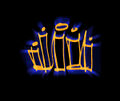Template:Selected anniversaries/March 10: Difference between revisions
No edit summary |
No edit summary |
||
| Line 17: | Line 17: | ||
||1748: Rev Prof John Playfair born ... Church of Scotland minister, remembered as a scientist and mathematician, and a professor of natural philosophy at the University of Edinburgh. Pic. | ||1748: Rev Prof John Playfair born ... Church of Scotland minister, remembered as a scientist and mathematician, and a professor of natural philosophy at the University of Edinburgh. Pic. | ||
||1762: Jeremias Benjamin Richter born ... chemist. He is known for introducing the term stoichiometry. Pic. | |||
||1805: Felice Fontana born ... physicist who discovered the water gas shift reaction in 1780. He is also credited with launching modern toxicology and investigating the human eye. | ||1805: Felice Fontana born ... physicist who discovered the water gas shift reaction in 1780. He is also credited with launching modern toxicology and investigating the human eye. | ||
| Line 24: | Line 26: | ||
||1864: William Fogg Osgood born ... mathematician. | ||1864: William Fogg Osgood born ... mathematician. | ||
||Carlo Severini | ||1872: Carlo Severini born ... mathematician. | ||
||Moritz Hermann von Jacobi | ||1874: Moritz Hermann von Jacobi born ... engineer and physicist born in Potsdam. Jacobi worked mainly in Russia. He furthered progress in galvanoplastics, electric motors, and wire telegraphy. Pic. | ||
|File:Havelock.jpg|link=Havelock|1875: [[Havelock]] announces plan to collaborate with [[Alexander Graham Bell (nonfiction)|Alexander Graham Bell]] on development of new data communications protocol. | |File:Havelock.jpg|link=Havelock|1875: [[Havelock]] announces plan to collaborate with [[Alexander Graham Bell (nonfiction)|Alexander Graham Bell]] on development of new data communications protocol. | ||
| Line 32: | Line 34: | ||
File:Alexander Graham Bell.jpg|link=Alexander Graham Bell (nonfiction)|1876: [[Alexander Graham Bell (nonfiction)|Alexander Graham Bell]] makes the first successful telephone call by saying "Mr. Watson, come here, I want to see you." | File:Alexander Graham Bell.jpg|link=Alexander Graham Bell (nonfiction)|1876: [[Alexander Graham Bell (nonfiction)|Alexander Graham Bell]] makes the first successful telephone call by saying "Mr. Watson, come here, I want to see you." | ||
||1891 | ||1891: Almon Strowger, an undertaker in Topeka, Kansas, patents the Strowger switch, a device which led to the automation of telephone circuit switching. | ||
||Ralph Kronig | ||1904: Ralph Kronig born ... physicist. He is noted for the discovery of particle spin and for his theory of x-ray absorption spectroscopy. | ||
||Boris Vian | ||1920: Boris Vian born ... polymath: writer, poet, musician, singer, translator, critic, actor, inventor and engineer. He is best remembered today for his novels. Those published under the pseudonym Vernon Sullivan were bizarre parodies of criminal fiction, highly controversial at the time of their release. | ||
||1923 | ||1923: Val Logsdon Fitch born ... physicist and academic, Nobel Prize laureate (d. 2015) | ||
File:Philo T Farnsworth.jpg|link=Philo Farnsworth (nonfiction)|1936: Inventor and crime-fighter [[Philo Farnsworth (nonfiction)|Philo Farnsworth]] invents an early form of all-electronic [[scrying engine]] which detects and exposes [[transdimensional corporations]]. | File:Philo T Farnsworth.jpg|link=Philo Farnsworth (nonfiction)|1936: Inventor and crime-fighter [[Philo Farnsworth (nonfiction)|Philo Farnsworth]] invents an early form of all-electronic [[scrying engine]] which detects and exposes [[transdimensional corporations]]. | ||
||1942 | ||1942: Wilbur Scoville dies ... pharmacist and chemist. | ||
|File:Project Diana antenna.jpg|link=Project Diana (nonfiction)|1946: The United States Army Signal Corps modifies [[Project Diana (nonfiction)|Project Diana]] antenna to power new type of [[scrying engine]] intended to detect and counterattack [[crimes against mathematical constants]]. | |File:Project Diana antenna.jpg|link=Project Diana (nonfiction)|1946: The United States Army Signal Corps modifies [[Project Diana (nonfiction)|Project Diana]] antenna to power new type of [[scrying engine]] intended to detect and counterattack [[crimes against mathematical constants]]. | ||
Revision as of 10:24, 4 January 2019
1262: First use of Yui's triangle to compute the APTO Accords.
1604: Alchemist and chemist Johann Rudolf Glauber born. He will be an early industrial chemical engineer.
1604: Mathematician and crime-fighter Galileo Galilei prevents alleged supervillain Anarchimedes from kidnapping the newborn Johann Rudolf Glauber. Anarchimedes intended to raise Glauber in captivity, taking credit for Glauber's chemical research.
1670: Alchemist and chemist Johann Rudolf Glauber dies. He was an early industrial chemical engineer.
1876: Alexander Graham Bell makes the first successful telephone call by saying "Mr. Watson, come here, I want to see you."
1936: Inventor and crime-fighter Philo Farnsworth invents an early form of all-electronic scrying engine which detects and exposes transdimensional corporations.
1961: Karl Jones born.
1967: Engineer, inventor, and crime-fighter Charles William Oatley invents new type of scanning electron microscope which detects and prevents crimes against physical constants.
2006: The Mars Reconnaissance Orbiter arrives at Mars.
2017: Dennis Paulson of Mars celebrates the eleventh anniversary of the Mars Reconnaissance Orbiter arriving at Mars.
2016: Embassy by Karl Jones is voted Picture of the Day by the citizens of New Minneapolis, Canada.









